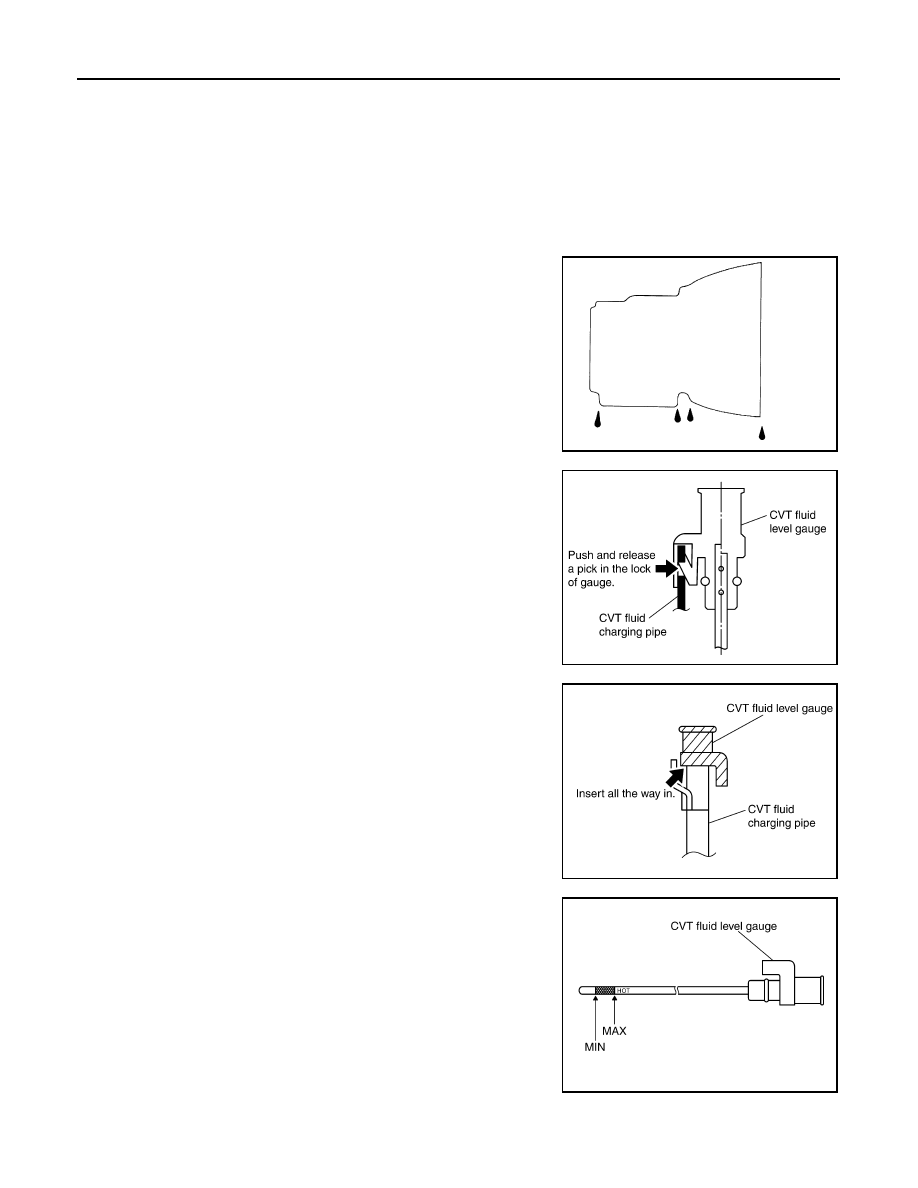Content .. 1516 1517 1518 1519 ..
Nissan Altima L32. Manual - part 1518

TM-416
< ON-VEHICLE MAINTENANCE >
[CVT: RE0F10A]
CVT FLUID
ON-VEHICLE MAINTENANCE
CVT FLUID
Inspection
INFOID:0000000004201992
CHECKING CVT FLUID
Fluid level should be checked with the fluid warmed up to 50
° to 80°C (122° to 176°F). The fluid level check
procedure is as follows:
1. Check for fluid leakage.
2. With the engine warmed up, drive the vehicle in an urban area.
When ambient temperature is 20
°C (68°F), it takes about 10
minutes for the CVT fluid to warm up to 50
° to 80°C (122° to
176
°F).
3. Park the vehicle on a level surface.
4. Apply parking brake firmly.
5. With engine at idle, while depressing brake pedal, move shift
selector throughout the entire shift range.
6. Pull out the CVT fluid level gauge from the CVT fluid charging
pipe after pressing the tab on the CVT fluid level gauge to
release the lock.
7. Wipe fluid off the CVT fluid level gauge. Insert the CVT fluid
level gauge rotating 180
° from the originally installed position,
then securely push the CVT fluid level gauge until it meets the
top end of the CVT fluid charging pipe.
CAUTION:
When wiping away the CVT fluid level gauge, always use
lint-free paper, not a cloth rag.
8. Place the selector lever in “P” or “N” and make sure the fluid
level is within the specified range.
CAUTION:
When reinstalling CVT fluid level gauge, insert it into the
CVT fluid charging pipe and rotate it to the original installa-
tion position until it is securely locked.
CVT FLUID CONDITION
SMA146B
SCIA1933E
SCIA1931E
SCIA1932E